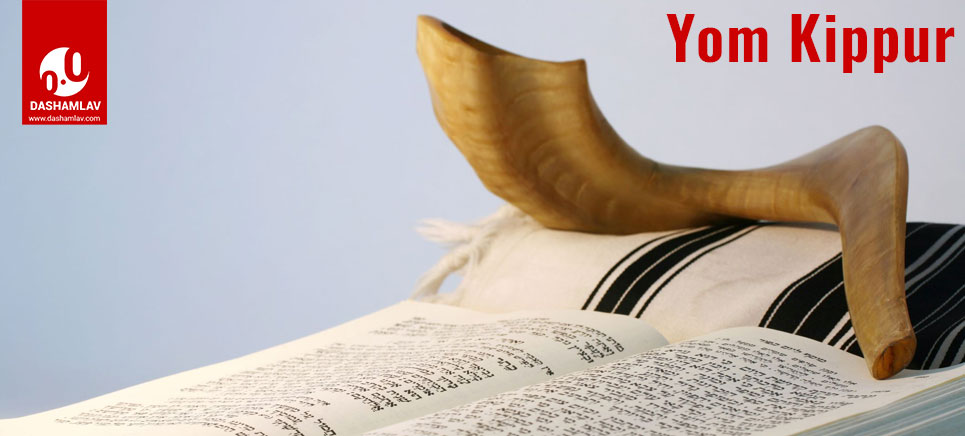Yom Kippur [pronounced as y-o-m ki-p-r / ˌjɒm kɪˈpʊə(r)] is the most solemn day of the year for Jews. This Jewish holy day is associated with the rituals of atonement and repentance. Most Jews spend the entire day in prayer services in synagogues. Beyond specific actions the day is dedicated to introspection, prayers, and forgiveness.
In the Bible, Yom Kippur finds mention as Shabbat Shabbaton (Sabbath of Sabbaths). In Judaism, it is believed that God forgives the sins of those who sincerely repent. Repentance is an element of atoning for sin in Judaism. The ones who show their repentance by the performance of good deeds and improved behavior are forgiven by the God.
Yom Kippur 2020 will be observed on 27 September.
Meaning of Yom Kippur
In the Hebrew language, Yom means ‘day’ and Kippur stands for ‘atonement’. Thus, this day is also known as the Day of Atonement.
Purpose of Yom Kippur
The purpose of Yom Kippur in Judaism is to effect individual and collective purification. This purification is achieved through the practice of sincere repentance of one’s own sins against God as well as by forgiving others for their sins. Reconciliation and forgiveness hold great significance in this observance.
In order to seek forgiveness, it is important that we forgive others. In other terms, as Rabbi Israel Baal Shem Tov (the founder of Hasidism) rightly put it, “If we cannot forgive others, how can we expect God to forgive us?”
Celebration & Importance of Yom Kippur
Yom Kippur is observed on the 10th day of the Jewish month of Tishrei (coincides with September and October). The day marks the culmination of the “10 days of Awe” (Yamim Nora’im) which begins with Rosh Hashanah, the Jewish New Year.
 Yom Kippur Prohibitions
Yom Kippur Prohibitions
Traditionally, Jews observe certain prohibitions on Yom Kippur. These prohibitions include abstention from the following:
- Eating and drinking
- Bathing or washing
- Anointing oneself with perfumes or lotions
- Marital relations
- Wearing leather shoes
Prayers Services
Yom Kippur is a strict day of rest. Jews observe a 25-hour long fast on this day and spend their entire day in prayers and meditation.
Yom Kippur has five prayer services- Maariv, Shacharit, Mussaf, Minchah, and Neilah.
The very first prayer service takes place just before the sunset on the evening of Yom Kippur and it is known as Kol Nidre.
Kol Nidre
It is an Aramaic declaration recited in the synagogue (Jewish house of worship). Kol Nidre is not a prayer in strict terms but a formula for the annulment of private vows during the course of the year.
Blowing of Shofar
Neilah service is the final service of Yom Kippur. The term Neilah literally means ‘closing’. Thus, Neilah service symbolically represents the closing of heaven gates. The Neilah service builds in intensity and finally concludes with Tekiah Gedolah or great blast of the Shofar (ram’s horn). The blowing of shofar signals the conclusion of the Day of Atonement.
History of Yom Kippur
It is traditionally believed that the first Yom Kippur was observed on the arrival of Israelites at Mount Sinai after their exodus from Egypt. In the Bible, Mount Sinai is the mountain at which God gave the Ten Commandments to Moses.
When Moses was descending from the mountain, he got angry as he caught his people worshiping a golden calf. In anger, he shattered the sacred tablets. As the Israelite atoned for their idolatry, their sins were forgiven by God and God offered a second set of tablets to Moses.
Yom Kippur at Jerusalem’s Holy Temple
As per Jewish texts, the high priest entered the inner sanctum of Jerusalem’s holy temple on Yom Kippur during biblical times. The priest used to perform complex ceremonies and asked for redemption and forgiveness on behalf of all the Israelite. It was only after the destruction of the Second Temple by Romans in 70 A.D. that this tradition discontinued. It was later adapted into service for rabbis and their congregations in individual synagogues.
Use the citation below to add this article to your bibliography
"Yom Kippur: Meaning, Purpose, Celebration, Importance and History." Dashamlav.com. Web. 27 July 2024. <https://dashamlav.com/yom-kippur-meaning-purpose-celebration-importance-history/>
Dashamlav.com, "Yom Kippur: Meaning, Purpose, Celebration, Importance and History." Accessed 27 July 2024. https://dashamlav.com/yom-kippur-meaning-purpose-celebration-importance-history/
"Yom Kippur: Meaning, Purpose, Celebration, Importance and History." (n.d.). Dashamlav.com. Retrieved 27 July 2024 from https://dashamlav.com/yom-kippur-meaning-purpose-celebration-importance-history/
